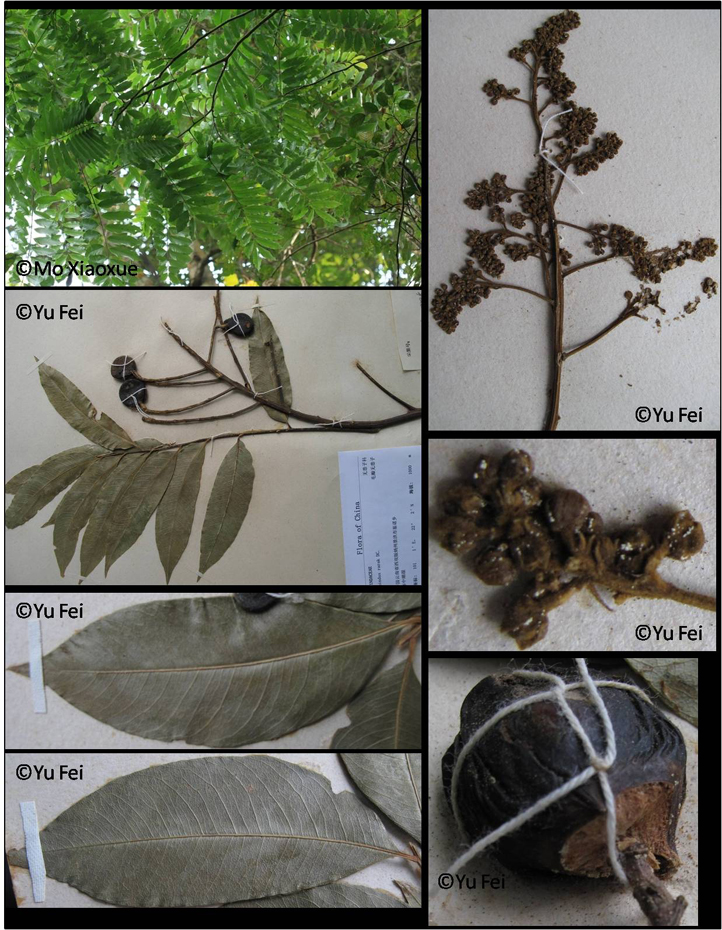Sapindus rarak DC., Prod. 1:608 (1824)
Latin for the local Malesian plant name 'rerak or rerek'.Synonyms
Dittelasma rarak (DC.) Hook.f.
Saponaria Rarak Rumph.
Sapindus angustifolius Blume
Description
Tree, up to 42 m high, dbh up to 1 m. Branchlets terete, up to 1 cm thick, inconspicuously lenticellate, brownish to blackish, fulvous tomentellous,
glabrescent. Leaves compound, (7-)9-13-jugate, up to 50 cm long, glabrous. Leaflets subopposite to alternate, lanceolate-ovate, upper half
rounded-attenuate to cuneate; apex obtuse to tapering acute-acuminate, mucronate; midrib slightly raised above. Inflorescences up to c. 35 cm long,
densely fulvous- to ferrugineous-tomentellous. Flowers zygomorphic, white. Sepals flat, hardly petaloid, outside densely appressed long fulvous-hairy.
Petals 4, lanceolate-ovate to elliptic, 3 by 1-2 mm, short-clawed, outside densely appressed long fulvous-hairy, woolly along the margin. Disc
semi-annular, glabrous. Filaments densely long-hairy outside and along the margin, the apical part excepted, in male flowers 2.5 mm, in female ones
1.2-1.5 mm. fruit parts subglobular, 2 by 1.8 cm, carnate, red, glabrous. Seeds subglobular, 1.2-1.5cm diam. [from Flora of China]
Ecology
Forests, mainly under seasonal conditions; c. 200-1600 m altitude.
Uses
Wood hard, but not durable. Fruits and seeds used as buttons and beads.
Distribution
India (Assam), Southern China, Indo-China and Taiwan to Malay Peninsula, Sumatra, Bangka, Java, Madura, Lombok and Sumbawa.
Local names
Maobanwuhuanzi (China).
